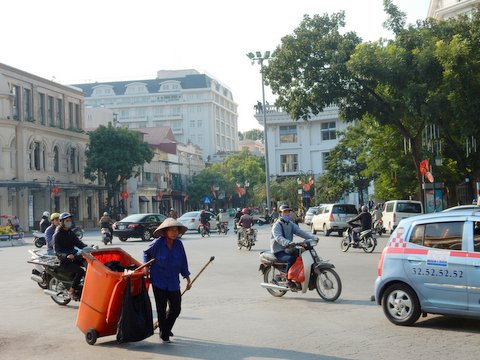When New York City was in a bad way, mostly from crime and grime, before the first Giuliani administration, the editor and social critic Lewis Lapham said: “First, fix the taxis.”
Quite so. Taxis are the public face of a city. In the United States, taxis are mostly a disgrace: dirty, poorly maintained and driven by people, often new arrivals, who do not know their way around.
It is not clear that New York fixed the taxis, but they seemed to improve along with a general improvement in street-level life in the Big Apple.
New York taxis are pretty special. An English writer in the 1960s described them with enthusiasm as “great yellow projectiles” hurtling down the Manhattan canyons. Next to London’s clumsy-looking but very nimble black boxes, there is a raw energy about New York taxis that mirrors the city they serve.
Yet there has been no distinctive vehicle for taxis since the Checker Motors Corporation of Kalamazoo, Mich., went out of business in 1982. Like other cities, the New York taxi fleet has become eclectic. The de facto standard vehicle has been the taxi version of the Ford Crown Victoria, utilitarian rather than distinctive, and now being discontinued by Ford.
The first victim of non-standard vehicles in taxi livery is comfort, especially in New York City, where operators install intrusive Plexiglas partitions to protect drivers. These make the back seat feel more crowded than it perhaps is, and cause the passengers to wonder about the safety of their noses in the event of a short stop.
For most people taxis are a luxury, something special. We want to feel special in the back seat, more like a person and less like a package.
Well nearly three decades after the last Checker went into service in New York, donned its yellow livery and had its prized medallion (the city-issued license that controls the number of cabs permitted to operate), New York is copying the London example—a vehicle built just for taxi work. Bravo.
According to The New York Daily News, four companies are competing for the honor of building purpose-specific taxi cabs: General Motors, Ford, Nissan and an obscure Turkish auto company, KarsanKarsan. The newspaper says the two top contenders are in fact Nissan and KarsanKarsan.
Reports give the advantage to the Turkish entry. Photographs of the Nissan suggest something built on the platform of a commercial van, whereas the Turkish offering is more elegant, after the style of a crossover. The issue is before the New York Taxi and Limousine Commission.
Every few years, London has a competition for a new taxi model and these are sometimes built by companies not otherwise known for making cars.
London cabs have been regulated since the 17th century, when special designs for the horse-drawn contraptions were introduced and influenced carriage design around the world. They also led to some of the lore about London cabs. Cabbies, it is said, are obliged by law to carry a bale of hay for the horse; and it is legal for a gentleman to pee on the left rear wheel of the conveyance as necessary.
I have done many things in the back of a London cab, but I have never tested the left rear wheel. Also, I can attest that there is no trace of hay in or about today’s London taxi.
But there are things about London taxis that New York City, and by extension taxi operators across the United States, might wish to emulate:
—a. First, the roominess: Four people can comfortably ride in the back, two on the bench seat and two on fold-down seats facing backwards. This really is superior.
—b. Second, the roof height: In theory, this has to be high enough to accommodate a man wearing a top hat. The height of the man is not part of the legend.
—c. Third, the vehicle has to be able to turn almost in its own length. This, it is said, was introduced to accommodate the narrow circle in front of the Savoy Hotel, an Art Deco masterpiece.
If New York City gets new taxis, they will affect the whole country in time as did the Checker. After all, the original Checker market was not New York City but Chicago. Good ideas spread.
